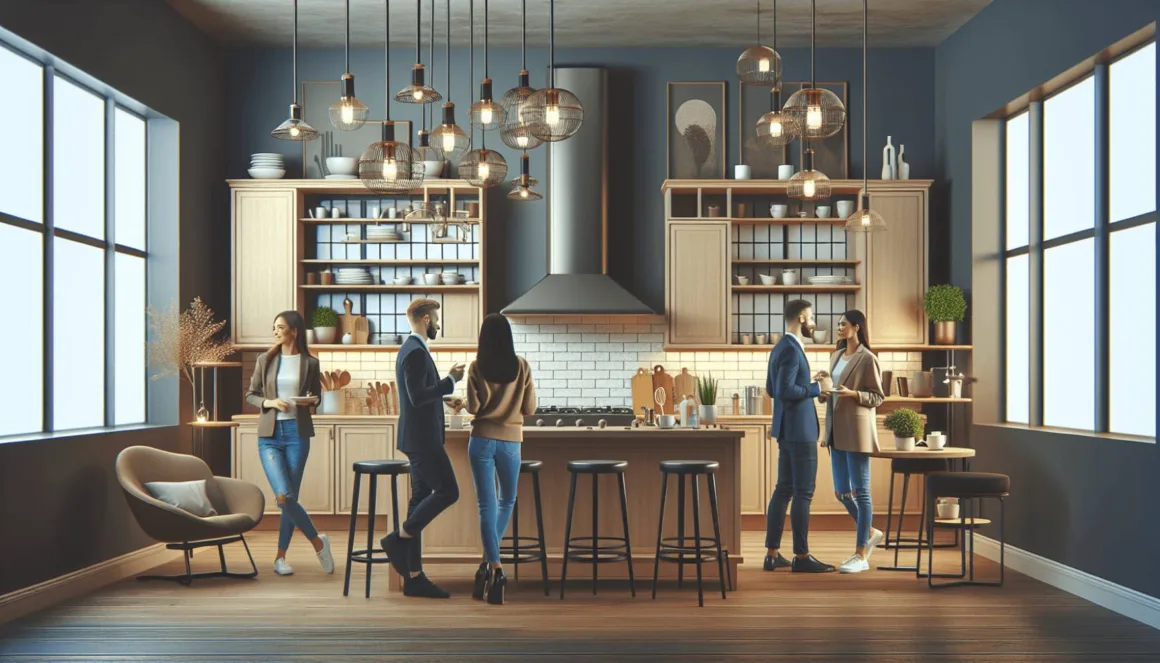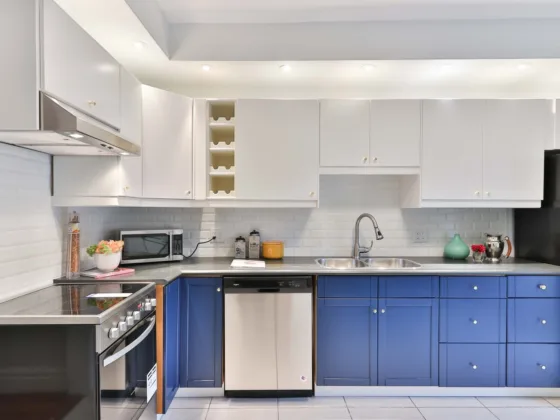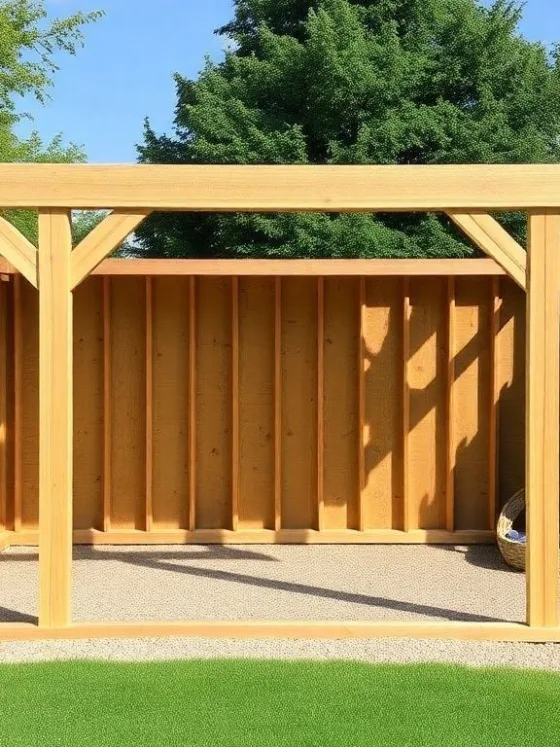Table of Contents Show
Introduction
A kitchen remodel can significantly increase the value and functionality of your home. It is a substantial investment that requires careful planning and consideration. To help you navigate this complex process, we will explore 15 Things That Can Make or Break Your Kitchen Remodel.
These key elements range from budgeting and design inspiration to lighting choices and smart technology integration. Each aspect plays a crucial role in achieving a successful renovation, ensuring that your kitchen looks stunning and meets your practical needs.
1. Budgeting and Costs
Setting a realistic budget for your kitchen remodel is crucial. Start by:
- Researching average costs in your area
- Listing all desired features and materials
- Allocating funds for labor and contingencies
Common unexpected expenses may include:
- Structural repairs: Hidden issues like outdated wiring or plumbing
- Permits and inspections: Necessary for compliance with local regulations
- Design changes: Last-minute alterations add to the expense
Managing costs effectively involves:
- Prioritizing essentials: Focus on function before aesthetics
- Sourcing materials wisely: Look for sales, discounts, or reclaimed options
- Tracking expenses: Use budgeting tools to monitor spending throughout the process
2. Design and Inspiration
Having a clear design plan is crucial for a successful kitchen remodel. Keeping the style, color, and materials consistent creates a space that feels balanced and welcoming. Without this consistency, your kitchen might end up looking messy or disconnected.
Finding inspiration for your kitchen design can be an exciting part of the process. Consider these sources to spark creativity:
- Magazines: Publications like Architectural Digest and Better Homes & Gardens offer extensive galleries of high-end kitchen designs.
- Online Platforms: Websites such as Pinterest and Houzz provide countless images and ideas from real-life renovations, allowing you to visualize different styles and layouts.
By combining ideas from these sources, you can create a unique yet cohesive design that suits your needs and preferences.
3. Professional Help
Hiring a designer offers numerous advantages for your kitchen remodel. They bring professional insights that can significantly enhance the efficiency and aesthetics of your project. Designers are adept at visualizing spaces, ensuring that every inch of your kitchen is utilized effectively.
Professional designers assist with critical decisions like color selection and material choices, which can be overwhelming. Their expertise helps in choosing a cohesive palette, ensuring colors complement each other and the overall design theme. They also guide you in selecting high-quality materials that fit your budget while providing durability and style.
Benefits of Hiring a Designer:
- Expert space planning
- Access to exclusive resources and materials
- Time and stress management
Professional Assistance:
- Color Selection: Creating a harmonious color scheme
- Material Choices: Advising on durability, cost, and aesthetics
A professional designer’s involvement can make or break your kitchen remodel, providing the foundation for a seamless and stunning transformation.
4. Kitchen Layout Planning and Appliance Selection
Effective kitchen layout planning is crucial for both functionality and aesthetics. When designing your kitchen, consider the work triangle—strategically placing the sink, stove, and fridge for optimal efficiency. This reduces unnecessary movement and improves workflow.
An open-concept design with islands has many benefits. Islands provide more counter space, and extra storage, and can serve as a casual dining area. They also facilitate a smooth transition between the kitchen and adjacent living areas.
When it comes to choosing the right appliances, it’s important to focus on both function and style. Opt for energy-efficient models to save on utility bills. Additionally, consider the size and appearance of the appliances to ensure they align with your overall design. Common choices include stainless steel for a modern aesthetic or panel-ready appliances that seamlessly match with cabinets for a unified look.
It’s also worth noting that in an open-concept kitchen, appliance selection becomes even more crucial as they are more visible in the shared space. Therefore, selecting appliances that complement the overall design is key.
Key considerations:
- Work Triangle: Optimize positioning of sink, stove, and refrigerator.
- Open-Concept Design: Enhances flow between spaces; adds functionality.
- Appliance Selection: Focus on energy efficiency, size, style compatibility, and overall design cohesion.
Incorporating these elements thoughtfully can significantly impact the success of your kitchen remodel.
5. Lighting Choices and Storage Solutions
Kitchen Lighting Options
Effective kitchen lighting options blend both functionality and ambiance effortlessly. Overhead lighting provides general illumination, essential for meal prep and cooking tasks. Common fixtures include:
- Recessed lights
- Pendant lights over islands
- Chandeliers for a focal point
Accent lighting adds depth and enhances the kitchen’s aesthetic. Consider:
- Under-cabinet strip lights for countertops
- Spotlights to highlight décor or architectural features
- Toe kick lighting for a floating effect
For a more versatile approach, explore different types of track lighting that can be adjusted to suit various tasks and moods.
Maximizing Storage Space
Innovative storage solutions are key to an organized kitchen. Maximize space with:
- Lazy Susans: Ideal for corner cabinets, providing easy access to items.
- Pull-out drawers: Perfect for pots, pans, and pantry items, ensuring everything is within reach.
Additionally, consider incorporating some custom cabinetry solutions like those offered by Marfa Cabinets, which can help you optimize your kitchen storage while also enhancing its overall aesthetic. Using these strategies not only boosts functionality but also keeps your kitchen clutter-free.
6. Flooring Selection and Countertop Materials
Durable Flooring Options
When choosing flooring for your kitchen remodel, it’s important to prioritize durability and easy maintenance. Porcelain tiles are a great option because they are long-lasting and resistant to stains. Another choice is luxury vinyl plank, which combines style and practicality by resembling hardwood while being water-resistant and simple to clean.
Countertop Selection: Granite vs Quartz vs Laminate
When choosing the right countertop material, it’s important to consider both the look you want and your practical needs:
- Granite: Known for its natural beauty and heat resistance, though it requires periodic sealing.
- Quartz: Non-porous and low-maintenance, offering durability with a wide range of color options.
- Laminate: Budget-friendly with diverse design choices, but less durable compared to granite or quartz.
The right combination of durable flooring options and suitable countertops can significantly influence the success of your kitchen remodel.
7. Backsplash Design and Cabinetry Features
A stylish backsplash can significantly enhance the visual interest of your kitchen design. Popular materials include:
- Glass: Offers a sleek, modern look and is easy to clean.
- Colored Subway Tiles: Adds texture and color, providing a classic yet contemporary appearance.
When choosing your backsplash, it’s crucial to balance aesthetics with practicality.
Investing in quality cabinetry is another essential factor that can make or break your kitchen remodel. High-quality cabinetry ensures durability and longevity, which are key for a heavily-used space like the kitchen. While cosmetic upgrades such as knobs and crown molding can add charm, they should not replace the need for well-built cabinets made from durable materials.
Prioritizing these elements will create both a visually appealing and highly functional kitchen space.
8. Smart Technology Integration, Natural Light Enhancement, Neutral Color Schemes, Functionality Over Aesthetics
Smart Technology Integration
Incorporating smart technology into your kitchen can significantly enhance its efficiency and functionality. Voice-controlled appliances like faucets allow for hands-free operation, which can be particularly useful when cooking or cleaning. Smart refrigerators with touchscreens provide recipe suggestions and grocery tracking. These innovations not only simplify daily tasks but also increase home value.
Natural Light Enhancement
Enhancing natural light in the kitchen is essential for creating a welcoming and spacious environment. Strategic placement of windows or adding skylights can flood the room with sunlight, making it feel larger and warmer. Skylights offer the added benefit of reducing energy costs by minimizing the need for artificial lighting during the day.
Neutral Color Schemes
Using neutral color schemes in kitchens has become increasingly popular due to their versatility and timeless appeal. Neutral tones like white, beige, and gray create a clean backdrop that allows standout elements like colorful backsplashes or statement appliances to shine. This approach also offers flexibility in changing decor without needing a complete overhaul.
Functionality Over Aesthetics
Prioritizing usability over purely aesthetic choices ensures an efficient cooking environment. Features such as workstation sinks with integrated accessories like cutting boards and colanders streamline meal preparation and cleanup. Pull-out pantry shelves and lazy Susans maximize storage while keeping essentials within easy reach, enhancing both functionality and organization in your kitchen.
Conclusion: Successful Kitchen Remodel Tips
Creating your dream kitchen means finding the right balance between style and practicality. With careful planning, you can make sure every detail adds to both the appearance and functionality of the space.
- Choose items that have multiple uses, like workstation sinks with built-in accessories.
- Opt for neutral colors that let standout features pop.
- Think about adding smart technology for better efficiency and higher home value.
By focusing on these 15 key aspects, you set the stage for a successful kitchen remodel that truly transforms your home.
FAQs (Frequently Asked Questions)
Setting a realistic budget is crucial for a successful kitchen remodel. Be aware of common unexpected expenses that may arise, such as plumbing or electrical updates. Effective cost management tips include prioritizing essential upgrades and allocating a contingency fund for unforeseen costs.
Having a coherent design plan is vital. You can find design inspiration from various sources, including home improvement magazines, online platforms like Pinterest and Houzz, or by visiting showrooms to see materials and layouts in person.
Hiring a professional designer can provide valuable insights into color selection and material choices, ensuring your kitchen remodel aligns with your vision while maximizing functionality. Professionals also help navigate complex design decisions and manage the renovation process efficiently.
Key considerations include the flow of movement within the space, whether to opt for an open-concept design with islands and selecting the right appliances that enhance both functionality and visual appeal. A well-planned layout can significantly improve usability.
Different types of lighting are essential in kitchens, including overhead lighting for general illumination and accent lighting to highlight specific areas or features. Proper lighting enhances both functionality and ambiance, making it easier to work in the kitchen.
When selecting flooring materials, consider durability and maintenance ease; options like porcelain tiles or luxury vinyl plank are popular choices. For countertops, assess the characteristics of materials such as granite, quartz, and laminate to determine which best fits your needs in terms of aesthetics and functionality.










